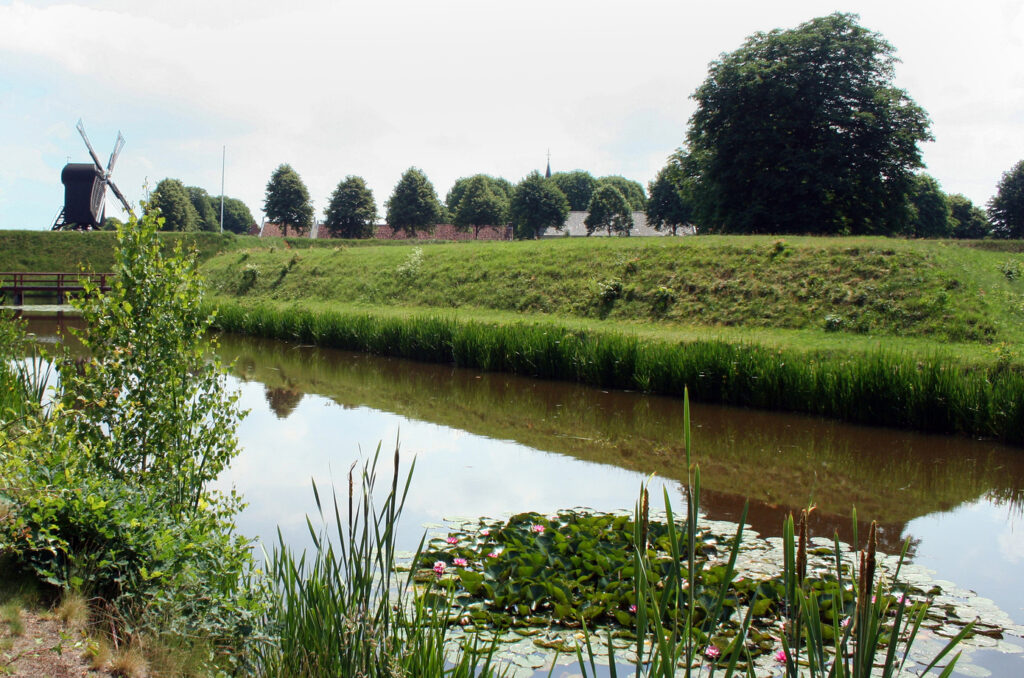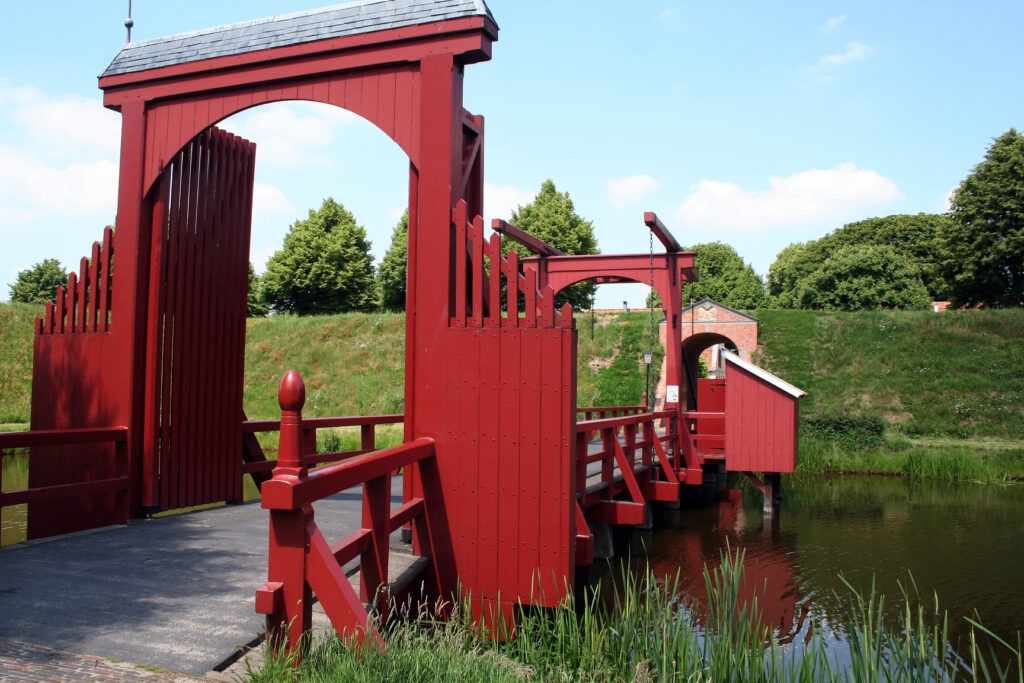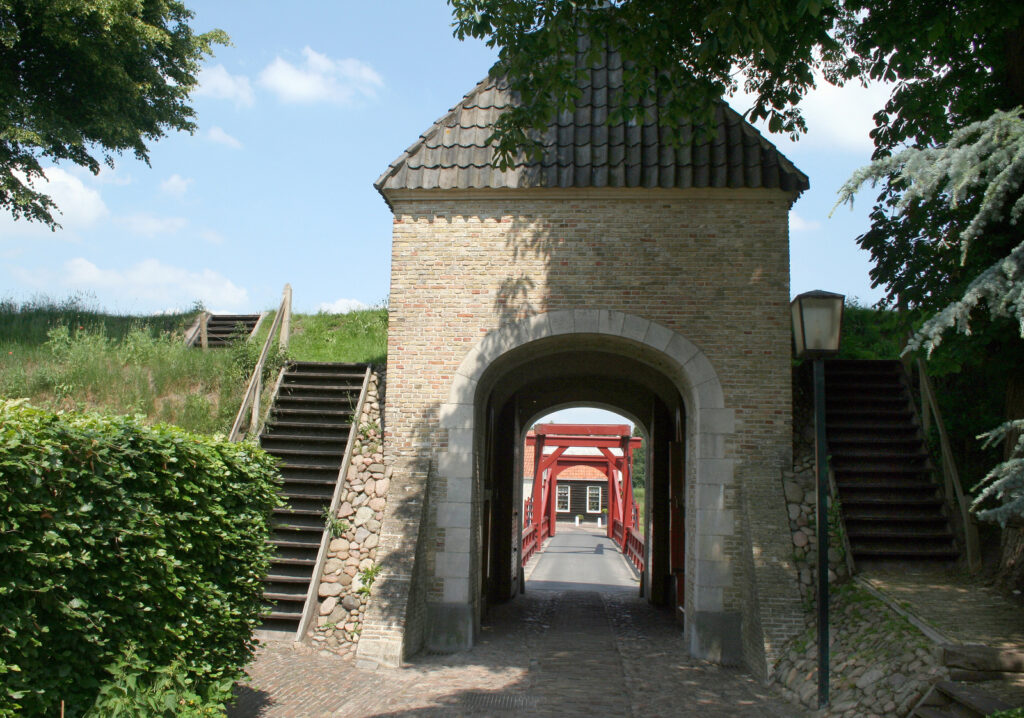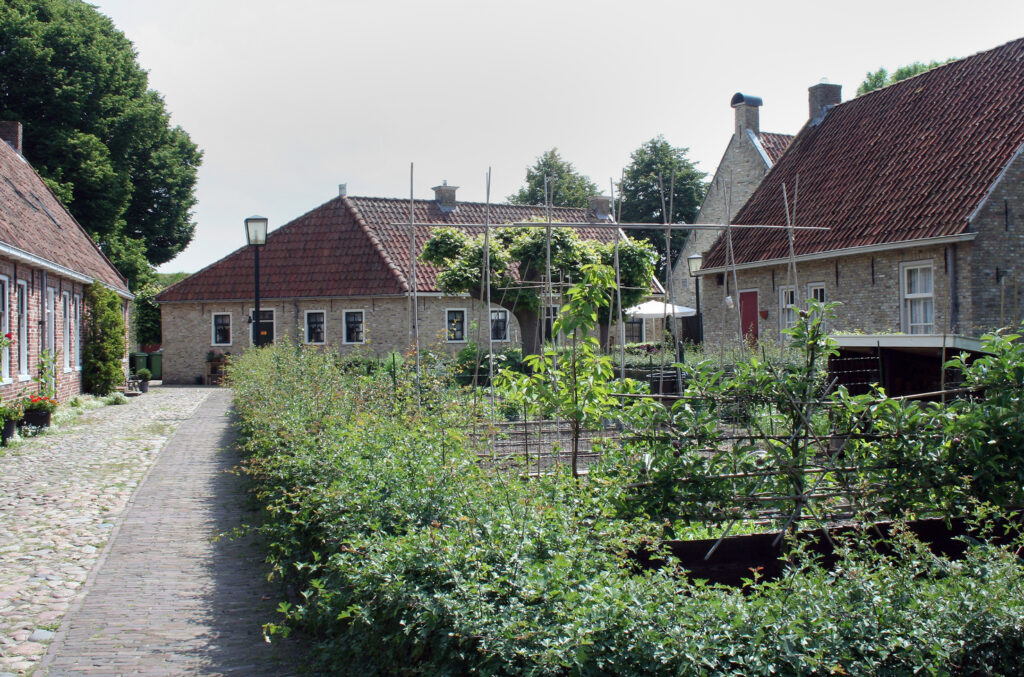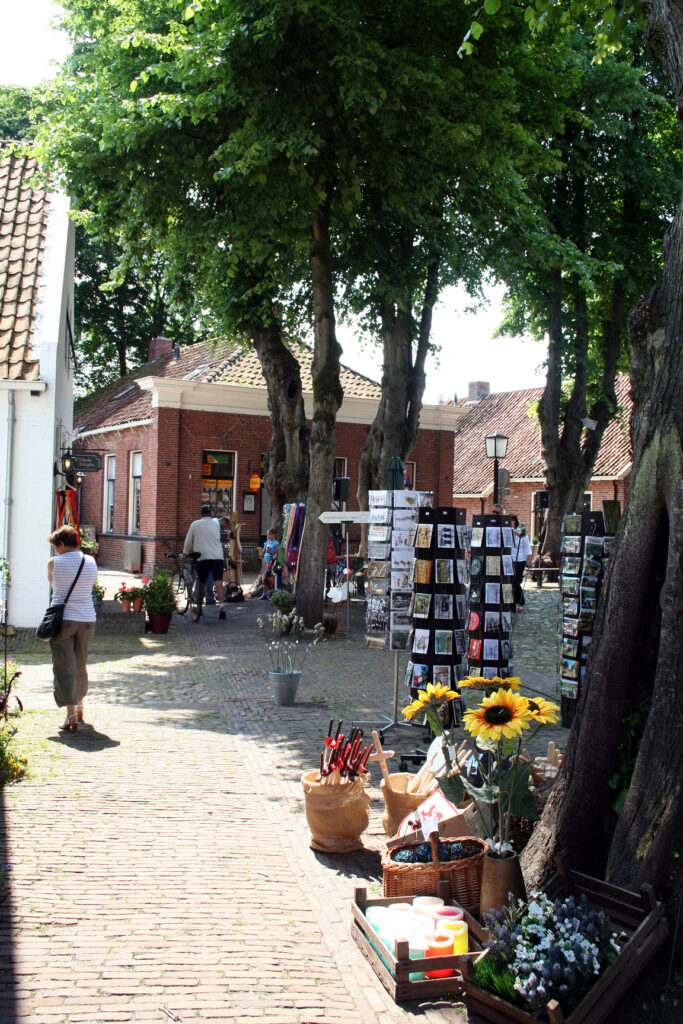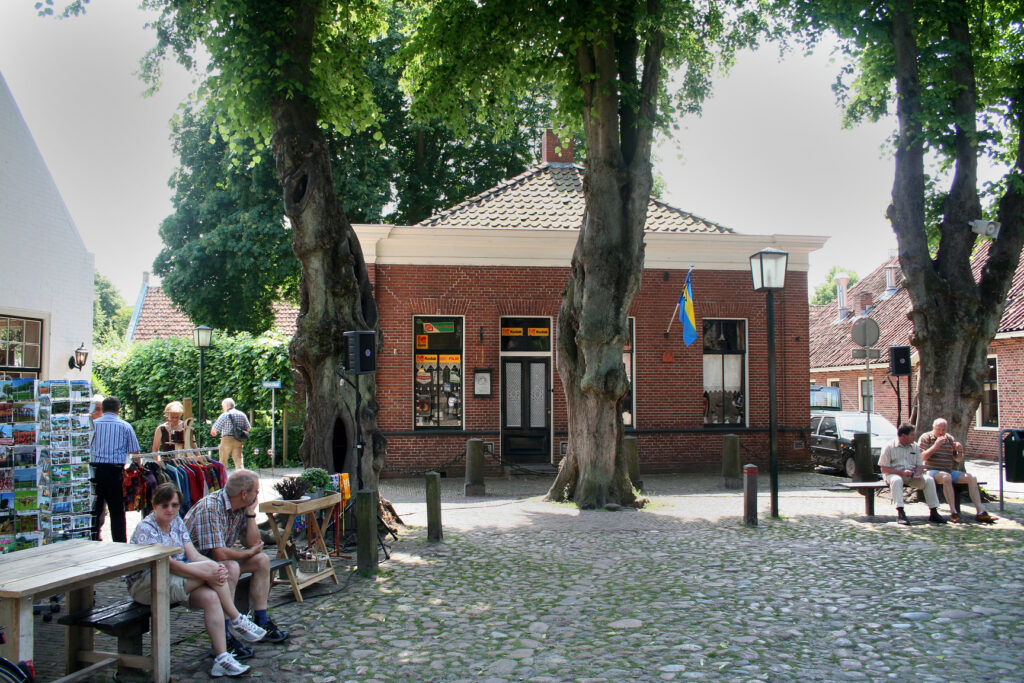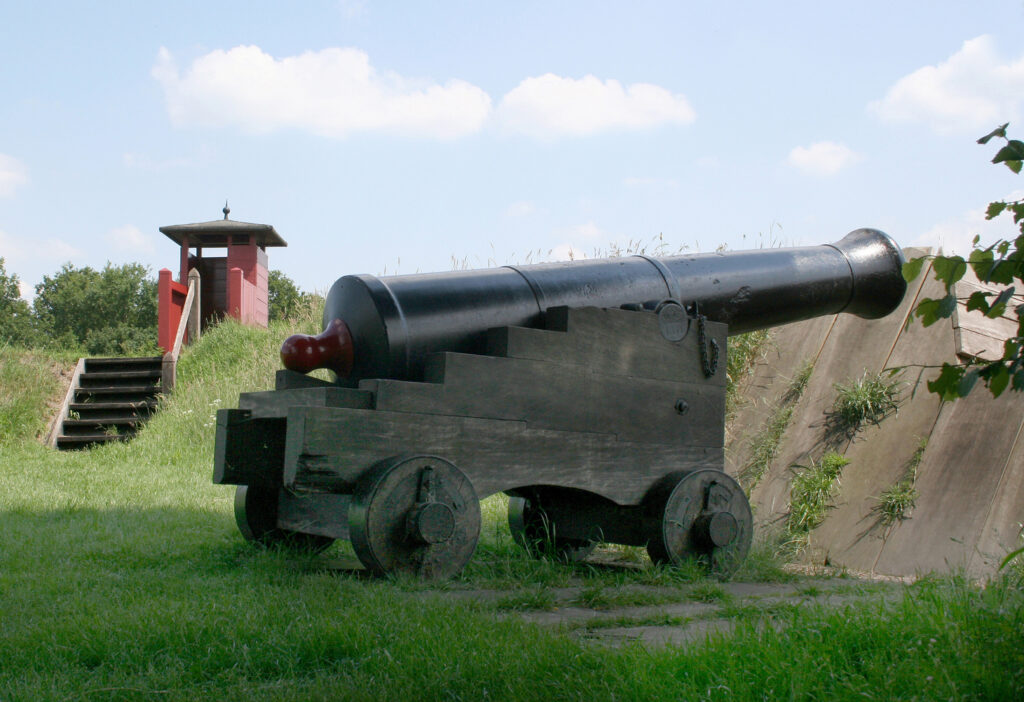BOURTANGE
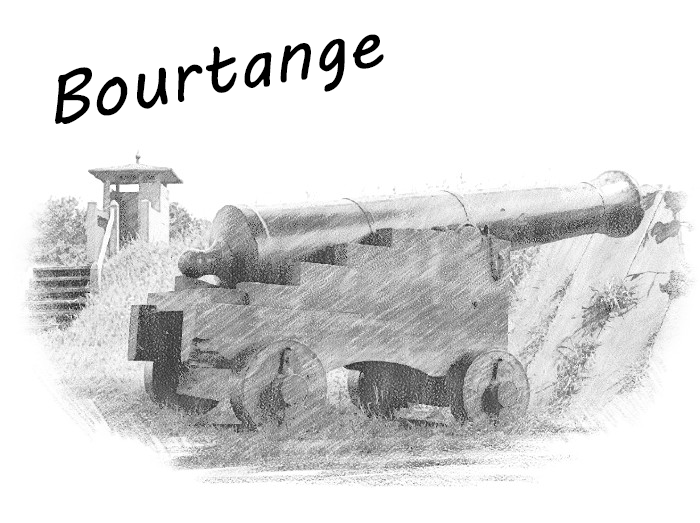
Bourtange, a charming Dutch village, is a historical gem nestled in the province of Groningen. What sets Bourtange apart is its star-shaped fortress, a unique and well-preserved example of military architecture from the 16th century. Originally built to defend against invasions during the Eighty Years’ War, the fortress has evolved into a picturesque destination that attracts history enthusiasts and curious travelers alike.
Surrounded by moats and ramparts, Bourtange’s layout resembles a star when viewed from above, showcasing the strategic brilliance of its design. The cobblestone streets wind through well-preserved buildings that once housed soldiers and their families. Today, these structures host museums, shops, and cafes, providing visitors with a fascinating glimpse into the village’s rich past.
The lush greenery surrounding Bourtange, along with the quaint canals that traverse the village, add to its idyllic charm. Exploring the fortress transports visitors back in time, allowing them to imagine the challenges and triumphs of those who lived within its walls centuries ago.
Whether strolling along the fortress walls, crossing the drawbridges, or delving into the interactive exhibits, Bourtange offers a delightful blend of history and natural beauty. A visit to this small Dutch village is a journey through time, where the echoes of the past resonate in every brick and cobblestone.
The fortress itself is free to enter, but you do pay for the events that take place
throughout the year.
Free parking.
Dogs are allowed.
W. Lodewijkstraat 33
9545 PA Bourtange
T 0599 35 46 00 E
[email protected]
The narrow cart track
The narrow cart track over the headland ran through the Bourtanger swamp and was only accessible in the summer season and in frosty conditions. The path had to be regularly reinforced with twigs, heather sods and other material. This route (called the Westerwoldinger weghe) was part of the trade route between Groningen and Westphalia, designed in 1457. It was connected to the Frisian road on the high, western bank of the Emso, which ran south from Emden via Rheine. The maintenance of the cart track was a joint responsibility of the inhabitants, who had to show up regularly. Parallel to this route, a canal was dug between the Westerwoldse Aa and the Ems after 1483 (the Oude Gracht), but it was not completed due to lack of funds and technical problems.
In order to secure the route and prevent incursions from the German hinterland, the Groningen stadtholder Karel van Egmond decided in 1530 to build a blockhouse (a small fort) here. Whether this plan has actually been realized is unknown. In the early years of the Dutch Revolt, namely in 1570, soldiers were again stationed there.
200.000 bullets
Fort Bourtange was built in 1593 during the Dutch Revolt and was used until 1851.
The fortress Fortress Bourtange was built at the end of the sixteenth century as a defensive structure during the Eighty Years’ War. The bastions offered a clear view of enemies coming from all directions. Or rather: take a good look at how they hopelessly sank into the surrounding mush. A century later, Captain Prott put Bourtange on the map when the hostile bishop Bernard van Galen – known in Groningen as Bommen Berend – attempted to corrupt Prott with a ‘golden bombardment’; he tried to bribe Prott with the choice between a sum of 200,000 guilders or an estate in Westphalia. According to tradition, Prott replied as follows: “I’ll give you 200,000 bullets instead!” Bourtange withstood the ensuing attack and forced the enemy back into the mud.
Travel through time
A visit to Bourtange guarantees a day of pure fun. Explore the village on foot, visit the shops and the old-fashioned candle factory and end your excursion with a drink or snack in one of the cozy bars or restaurants. Interesting events are held on a regular basis, from lively markets to realistic re-enactments of battles. Immerse yourself in the history of the fortress and take an impressive journey through time in one of the various museums. End the day with an overnight stay in the fort in a box bed and experience what it was like at night. If you’re spending a weekend here, you don’t have to worry if a loud bang suddenly sounds, because the old cannon is still fired every Sunday afternoon.







